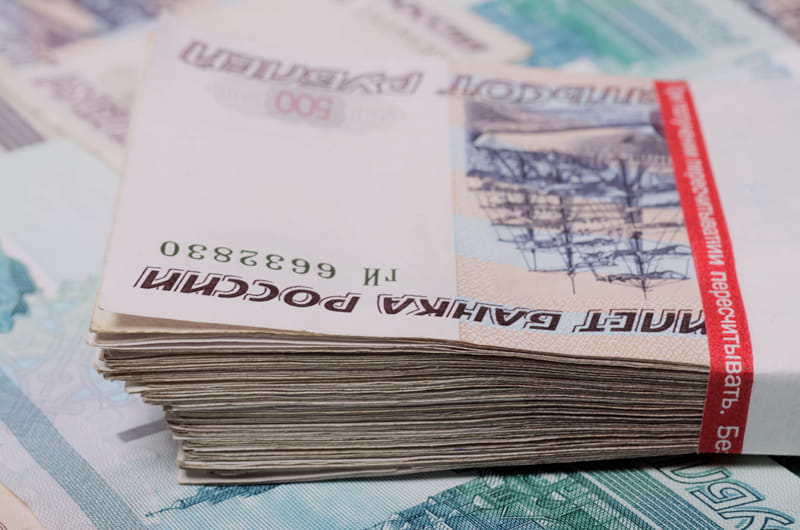The collapse of the Russian Ruble: A Q&A with Marco Airaudo
 By Frank Otto
By Frank Otto

- Drexel Recognizes Gregory E. Deavens, CPA, CGMA as Business Leader of the Year
- Through Connections and Community, Drexel Course Helps Launch Computer Lab in Tanzania
- Drexel Helps Promote Philadelphia as a Premier Destination for Global Education
- Students, Faculty Represent Drexel University at COP28 Through Dialogue and Research

The Russian ruble’s value has decreased by approximately 50 percent since January of this year, reaching an all-time low exchange rate with the American dollar, 80:1, last week.
That drop occurred despite what Bloomberg called a “surprise” drastic interest rate increase of 6.5 percent.
After a small rally around the time Russian President Vladimir Putin gave his annual press conference, in which he vowed to get the economy on track in two years and blamed the West for much of the country’s fiscal woes, the ruble only recovered to trade at roughly 60:1 with the American dollar.
Marco Airaudo, PhD, an economics professor in them the LeBow College of Business, spoke with DrexelNow about the Russian economy, what made the ruble collapse, and how the woes of Moscow could affect the rest of the world.
The value of the ruble has decreased by more than half in about a year. How did that happen?
There are usually several factors behind large and persistent devaluations of currencies. On the one hand, the value of a currency reflects the underlying fundamentals of the economy where it circulates. Unless the central bank intervenes, economies that are subject to structural problems like low growth, political instability, wars, etc., are doomed to witness large capital outflows. As that economy becomes less of a profitable “investment” opportunity for foreign investors, money flows somewhere else. This implies a decrease in the demand for that particular currency, which then depreciates.
On the other hand, currencies are traded very frequently in fluid financial markets. Currency traders do not (and often cannot) wait for some final figures on fundamentals before deciding on how to allocate their currency portfolios. They often respond to noisy signals, expectations and forecasts (which are more or less accurate) in order to beat their competitors. So, quite often, large purchases or sales of currencies are driven by “non-fundamental” reasons, like “beliefs that a currency will appreciate or depreciate.”
In my view, any large devaluations have both fundamental and non-fundamental components.
On the fundamental side, Russia is a very unbalanced economy, strongly relying on oil and energy-related exports, which suffered some major shocks in recent times. First, due to a global contraction in demand (following the global downturn), the price of a barrel is now down to about $60, a major negative shock for Russia. Second, the war-related sanctions have indeed harmed its economy further. So not only the price per barrel of oil is lower, but also the number of barrels sold is lower. Third, other countries (like the U.S.) have increased their oil production, thus “stealing” part of the market share.
On the non-fundamental side, it is hard for me to believe that some “smart” big financial traders are not making huge gains from the large depreciation of the ruble. These figures might have a strong interest in convincing other market participants that the ruble is worth less than its current market value. George Soros did something like that (almost by himself) in the early ‘90s with the Italian Lira and he succeeded.
How fast does a value change like this affect investors?
Obviously any large depreciation has immediate effects. It is so easy nowadays to move money across borders that it is unlikely that people holding large ruble portfolios will wait to see what happens in the next few weeks before acting. But it is also this “high speed” of money circulation that contributes to exacerbate depreciation. The more (and faster) investors sell the ruble, the more it will fall. A large depreciation has two almost immediate consequences: it puts upward pressure on domestic inflation, as the price of imported products will increase, and it increases the repayment cost of foreign debt.
What made the ruble vulnerable to this?
It is a combination of factors: a very unbalanced economy, large foreign shocks, and ongoing political pressure at the international level. And let’s say it: Russia is not a free market economy. It is strongly dominated and controlled by a few oligarchs. What the great economist Adam Smith called “the Invisible Hand” to describe how resources can be efficiently allocated in a free market economy is clearly not applicable to Russia.
Could Russia’s ruble issue affect the United States’ economy? How will the effects of this crisis be felt by the average person here, if at all?
I believe the direct consequences for the United States economy could be modest given that Russia and the United States are only marginal trading partners. What I am more worried about is a domino effect. European countries are indeed more exposed to the Russian economy and those are countries that the U.S. firms trade with quite a lot.
In This Article
Drexel News is produced by
University Marketing and Communications.